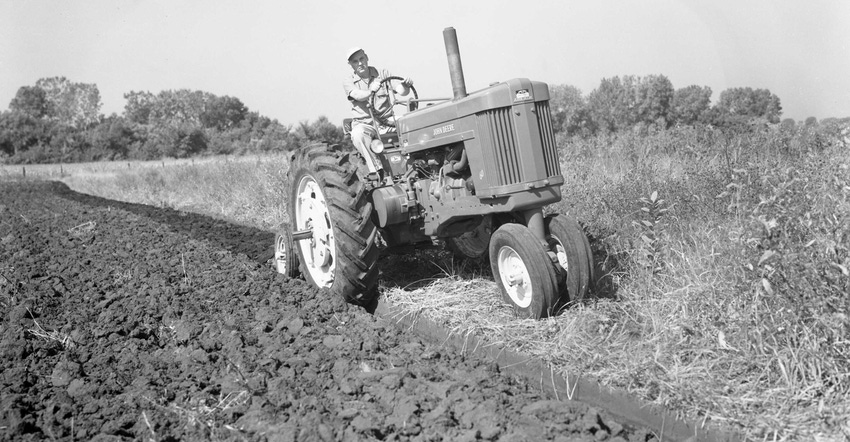October 17, 2019

On a bright, sunny afternoon in October, I spent time in a soybean field that was already harvested on Scott and Troy DeHart’s farm near Trafalgar, Ind. I was there to set up an invitational soils judging contest with Joey Dunn, Indian Creek FFA advisor, and Randy Staley, Clay County, a private soil scientist.
The field featured level land on the bottom side and rather steep, rolling ground on the top side. Scott DeHart dug four pits so we could evaluate soils.
Why should you care? Because what we found tells a story. It reminded us how much damage soil erosion causes if left unchecked.
In the lowest pit, Staley found 16 inches of soil that washed in from up higher over time. Most of it probably moved decades ago, when farmers moldboard-plowed. It continued during the chisel-plowing era.
“We call that top 16 inches ‘local overwash,’” Stanley explains. “It’s burying the original topsoil layer. Surprisingly, this top 16 inches was dark. It was good soil, which belonged somewhere else.”
Top of the hill
The pit DeHart dug on the hill revealed the source. “There was no topsoil left,” Staley says. “The clue was small stones scattered across the surface. The soil was moderately clay on top. It was once subsoil, but the original topsoil is now down at the other pit.”
Farmers in the ’70s referred to this latter location as a “red clay hill.” It turned up red with clay, typically hard to pull through, when moldboard-plowed or chisel-plowed. I know. I used to do it myself. I like to say that’s when I didn’t know any better. We didn’t know there was a better way.
The DeHarts no-till soybeans today. Other farmers have moved to all no-till, many also using cover crops to provide a living cover year-round. In fact, a discussion among no-tillers earlier this summer triggered my thinking about how serious soil erosion can be.
Do your part
“It’s still a big deal. You can’t afford to lose your topsoil,” one no-tiller at the roundtable noted. “We need to figure out how to get that message out to other farmers. Many of us shifted to no-till for other reasons, but one of the biggest benefits is still controlling soil erosion.”
Soil scientists once talked openly about the “tolerable limit, or T” — the amount of soil you were likely going to lose even under the best circumstances. The T by 2000 program, Indiana’s first statewide program funded with state dollars, was based on that concept.
The year 2000 arrived, and both conservationists and farmers realized just reducing soil loss to T wasn’t enough. Clean Water Indiana replaced T by 2000, although it still struggles to achieve adequate funding from the state.
What if you’re not ready to convert to 100% no-till, plant cover crops everywhere and perhaps even plant green? You can still help tame soil erosion. Most of you have already parked the moldboard plow. However, there are still lots of soybean stubble fields either chisel-plowed or tilled in some manner each fall. Those who understand the dangers of soil erosion see them and scratch their heads.
Leaving those stubble fields alone until spring would be a great place to start.
Comments? Email [email protected].
You May Also Like




